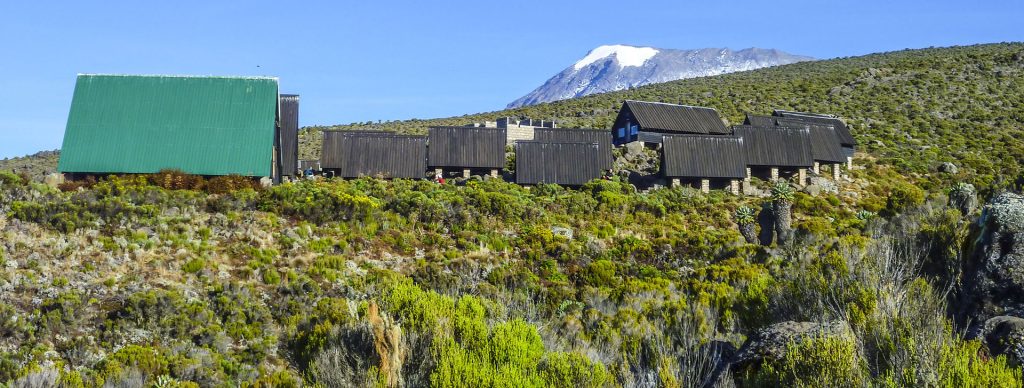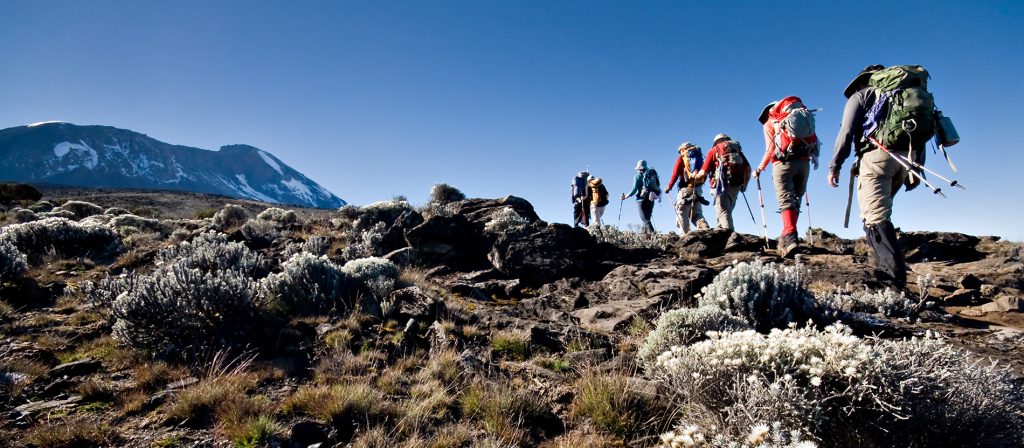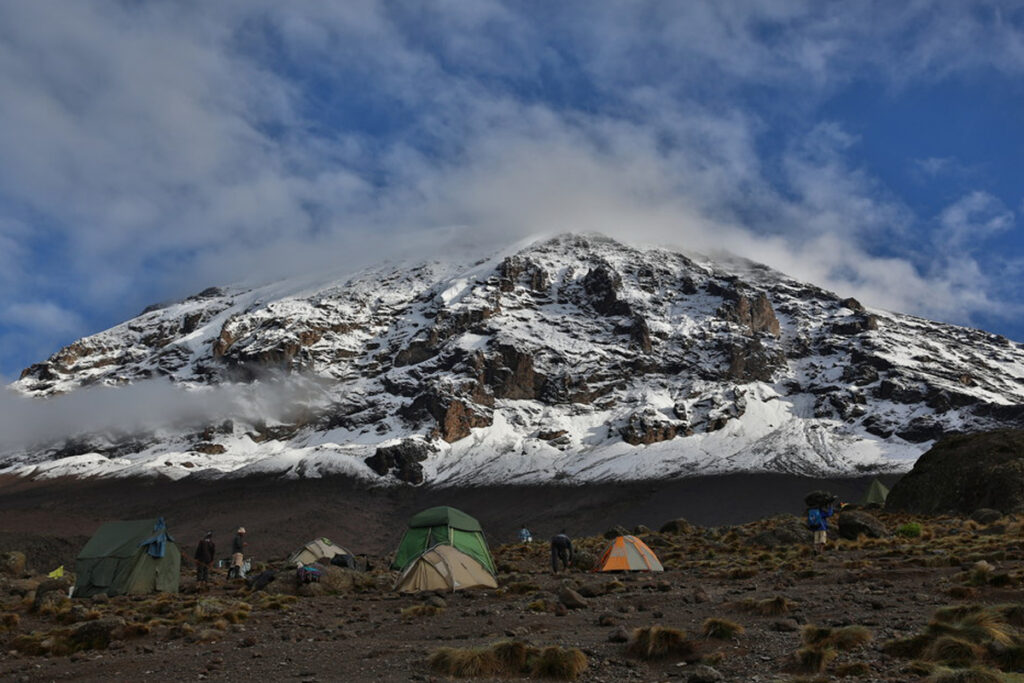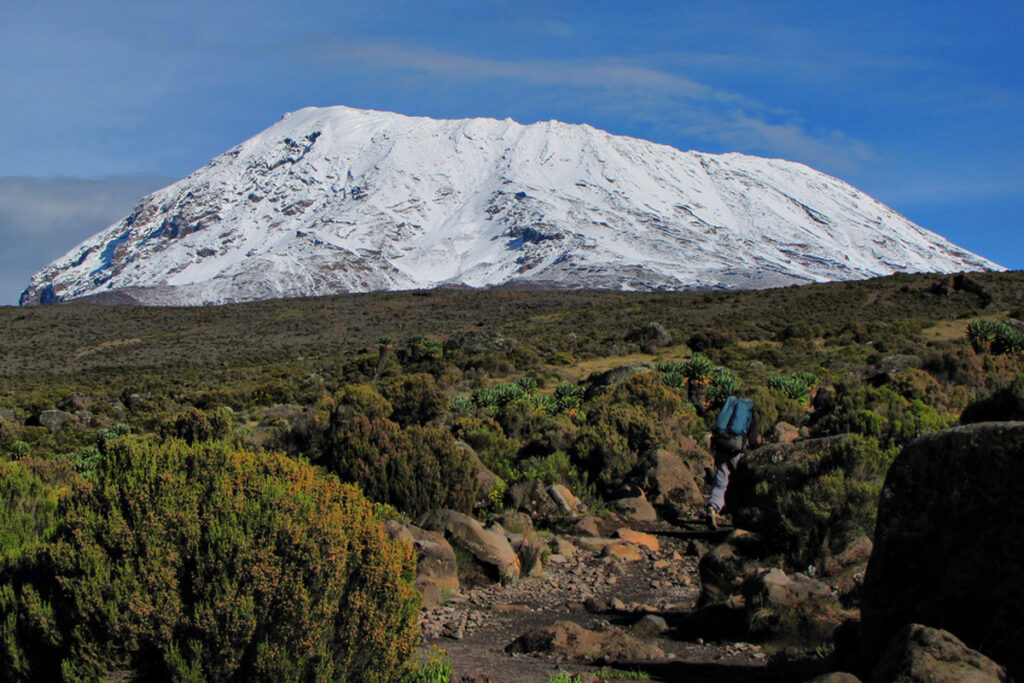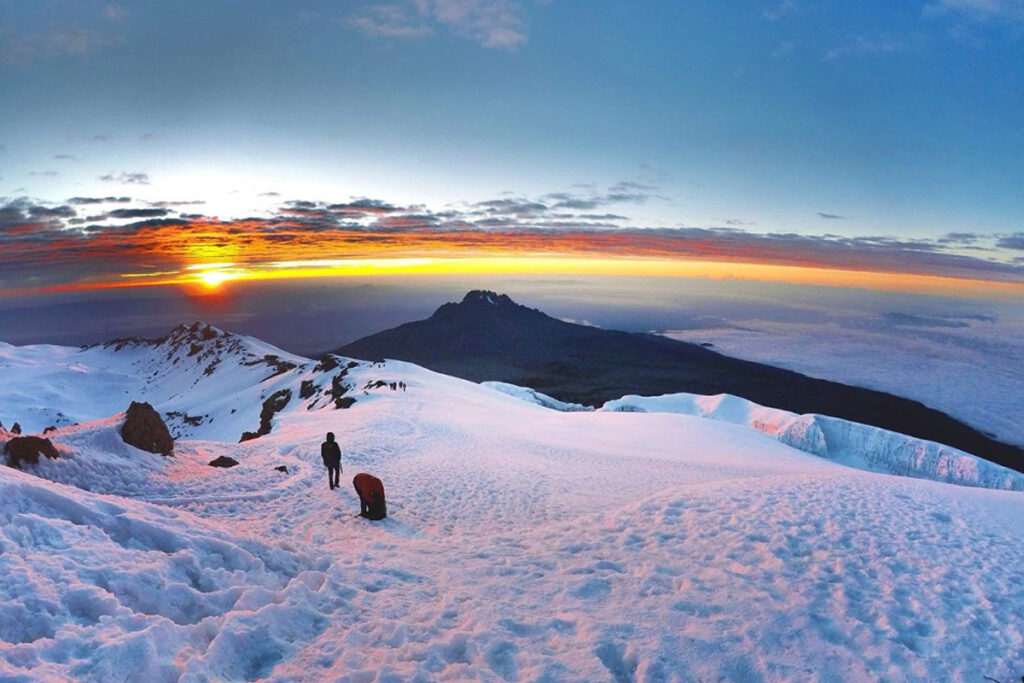Mount Kilimanjaro, located in Tanzania, is Africa’s highest peak and one of the world’s most iconic mountains. This majestic free-standing volcano is renowned for its diverse ecosystems, stunning scenery, and challenging treks to its summit. Kilimanjaro stands at an impressive 5,895 meters (19,341 feet) above sea level.
There are several routes to the summit of Mount Kilimanjaro, each offering a unique experience in terms of scenery, difficulty, and climatic conditions. Here are the main routes:
1. Machame Route: This is known as the “Whiskey Route” and is one of the most popular routes. It offers a diverse range of scenery and is known for its stunning views.
2. Marangu Route: Often referred to as the “Coca-Cola Route,” it’s the easiest and the only route with huts for accommodation. However, it’s also the most crowded.
3. Lemosho Route: This route is considered one of the more scenic options, with varied landscapes and wildlife. It’s also less crowded than some other routes.
4. Rongai Route: The only route that starts from the north side, it is a quieter and less crowded route. It’s often chosen for its unique perspective and wildlife encounters.
5. Umbwe Route: The most challenging route, it is the shortest but the steepest, recommended for experienced climbers.
6. Shira Plateau Route: Known for its diverse landscapes, this route is a variation of the Lemosho route and offers a more remote experience.
Kilimanjaro’s climatic conditions vary significantly as you ascend the mountain, transitioning from lush rainforests at the base to alpine desert and then to the arctic summit. The key climate zones are:
1. Cultivation Zone: This is the base of the mountain and features lush farmland and rainforests.
2. Rainforest Zone: This zone continues the ascent, characterized by high rainfall and thick vegetation.
3. Heath and Moorland Zone: As you ascend, the rainforest gives way to open moorland with heath shrubs and wildflowers.
4. Alpine Desert Zone: This higher-altitude zone is characterized by rocky terrain, minimal vegetation, and a stark, desolate beauty.
5. Arctic Zone: This is the final ascent to the summit, featuring glaciers, snow, and extreme cold.
The lengths of the different routes vary, but typical treks take 5 to 9 days to complete, depending on the route chosen and the acclimatization period included. It’s essential to choose the route that best suits your experience level and expectations to maximize your chances of successfully reaching the “Roof of Africa.”
